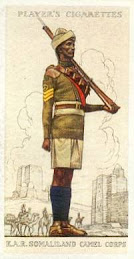
Henry Allingham |
It is 90 years today since the first Royal Air Force plane took to the skies. Henry Allingham, who at 111 years old is the only surviving founding member of the RAF, will be the guest of honour at RAF Odiham, Hampshire, to mark the anniversary. Here, with remarkable clarity for a man his great age, he tells Matt Roper of those early days.
By Matt Roper
1 April 2008
'I actually took my first flight three years earlier in 1915 and over all these years I remember it like yesterday.
It was still the Royal Naval Air Service then and I was the engineer in an Avro 504 biplane flying a reconnaissance mission over the North Sea.
This was only a dozen years after the Wright brothers flew the first plane, so it was the most amazing adventure for a young bloke like me.
It was so noisy, I do remember the deafening throb and the chap on the ground shouting "Chocks away!"
Then we were up, the freezing wind gushing past my face as we climbed steeply, my heart in my stomach as we banked.
My pilot and I had left Great Yarmouth armed with a rifle, two pigeons, and just enough fuel to get us to the Dutch coast and back again.
The pigeons were there for if we crashed - they would fly back to base with the message. The rifles were in case we saw the enemy... we had no built-in guns, so we would just have to fire from the cockpit.
To be honest, all the planes were so flimsy and unpredictable that both British and German pilots would immediately turn back rather than face each other in the skies.
With just a small windshield to protect us, we wore scarves and sheepskin and smeared Vaseline on our faces. Even so, it was still bitterly cold and I wished I'd wrapped up warmer.
But I remember getting back on the ground and just itching to take off again.
I'd enlisted as a mechanic in September 1915 and joined the Royal Naval Air Service at Great Yarmouth, one of 14 new recruits.
When I joined up lots of people doubted that air power would ever be any use.
Even General Haig though it's only use was for reconnaissance. From our first day, we set out to prove the doubters wrong.
I was involved in everything from repairing and maintaining the aircraft, pulling up seaplanes from the water's edge and helping night landings by using rows of flares to light up the runway.
In September 1917, after graduating as an Air Mechanic, I was posted to the Western Front where my job was recovering planes - often under sniper fire - that had been shot down.
But I most looked forward to the occasions when I would go up in the planes, flying off into the North Sea to look for enemy ships.
Some of the pilots were real Jack the Lads... I once helped strap one into his plane so he wouldn't fall out when he looped the looped - an offence that was punishable by court martial. Even then, I knew airplanes would play a major part in the military history of our country.
But in the end it was the raids by German bombers across London and Kent in 1917 that persuaded the powers-that-be that Britain needed a proper air force.
I read later that Lloyd George said: "Every time the Germans raid London, British airmen must blot out a German town."
A year later the RAF was formed with Hugh Trenchard as its first commander and I was proud to transfer across on April 1, 1918.
Without those early days and our scrappy little biplanes, the Second World War couldn't have been won.
It was wonderful to have been part of it.'
1918-2008 THE HISTORY OF THE ROYAL AIR FORCE
Apr 1, 1918: The Royal Air Force is formed by merging the RFC and RNAS. First mission is carried out by 22 Squadron. Women's Royal Air Force formed but disbanded two years later.
May 13, 1918: The Independent Force, RAF is created - world's first air force not controlled by an army or navy.
Jan-Nov 1918: The RAF destroy 2,953 enemy aircraft.
Nov 11, 1918: At the end of WWI the RAF is largest air force in the world with 27,333 officers, 263,837 other ranks and 22,647 aircraft.
Feb 1920: RAF aircraft acting with the Somaliland Camel Corps overthrow Somali's "Mad Mullah".
March-May, 1925: The RAF's first independent air action, bombing the mountain strongholds of Mahsud tribesmen in Waziristan.
Dec 23, 1928: The world's first air evacuation is carried out by the RAF when the British Legation in Kabul is flown to safety.
June 1939: Women's Auxiliary Air Force (WAAF), later the Women's Royal Air Force, is instituted.
July 10, 1940: Battle of Britain begins.
Sept 1940: 554 German planes downed by Spitfires and Hurricanes as the Luftwaffe fails to gain air superiority over Britain.
May 17, 1943: Eighteen Lancasters take part in the famous "bouncing bomb" Dambusters raid. Only 11 return.
Oct 31, 1956: Canberras bomb airfields on the first night of Suez War's air campaign.
30 April, 1982: Operation Black Buck. Vulcan bombers go on the first raids on Argentine positions in the Falklands.
1994: RAF and WRAF merge.
1991: RAF pilot Lt John Peters and navigator John Nichol (right) are shot down and captured by Iraq. They are released at the end of the war. Sept 2, 2006: Fourteen RAF personnel killed when a Nimrod surveillance plane crashes in Afghanistan in 2006.
42,000 The current strength of the RAF.
1,452 mph. The top speed of the Tornado, the RAF's main strike plane.
55,000 bomber personnel killed over Europe 1939-45.
13 nationalities that served in the RAF in WW2. They included Irish, Poles, Americans and Belgians.
Source: The Mirror (UK)
http://www.somalilandtimes.net/sl/2008/324/140.shtml

.png)



